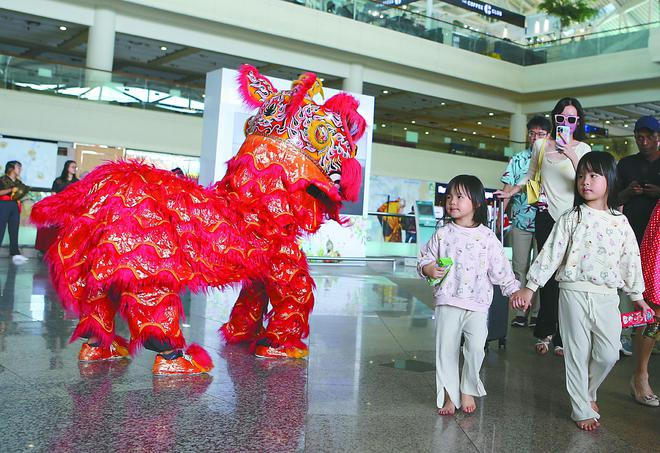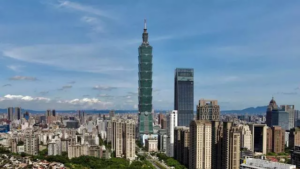
Many countries gear up for the influx of Chinese tourists
Outbound travel picks up during the Spring Festival holiday. According to the latest statistics from travel platforms such as Hornet’s Nest, Singapore, Malaysia and Thailand are basically among the top three most popular outbound tours for Chinese tourists. The Global Times correspondent in Singapore felt that this year’s Spring Festival, the streets of Singapore have seen the long-lost figure of Chinese tourists, but compared with the pre-epidemic, some attractions still seem relatively cold. China’s Ministry of Culture and Tourism has announced that from February 6, travel agencies and online travel companies nationwide will resume operating outbound group tours and “airfare + hotel” for Chinese citizens to the countries concerned on a pilot basis. Countries such as Singapore are preparing for the coming wave of Chinese tourists and are looking forward to a tourism recovery in 2023.

“Hello! Good New Year!” The Cambodia-China Times reported that senior officials from Cambodia’s Ministry of Tourism welcomed more than 100 Chinese tourists in Chinese on the 27th, the first batch to arrive in Sihanoukville, Cambodia after China further optimized its immigration policy.
Walking in Singapore’s Chinatown, one can again hear the familiar dialect of tourists from all over China. “I didn’t expect Singapore to be so lively in the Chinese New Year of the Rabbit.” Ms. Liu, a Liaoning tourist visiting Singapore, was overjoyed. On the night of the first day of the Lunar New Year, she told the Global Times in the illuminated Singapore Chinatown Niu Che Shui, “After holding back for three years because of the epidemic, our family went abroad for a spin this Spring Festival.”
Although Chinese tourists are returning to Southeast Asia one after another, but during the Spring Festival, the Global Times reporter in Singapore’s intuitive feeling is that, compared with the red-hot scene of tourism before the epidemic, there is a gap between this year’s Spring Festival. According to Singapore’s United Daily News, Singapore has been one of the top 10 most popular travel destinations for Chinese tourists, with about 3.6 million Chinese tourists traveling to Singapore each year before the epidemic. With China optimizing its immigration policy, Chinese tourist arrivals this year are expected to recover to thirty to sixty percent of 2019.
During the Chinese New Year, Singapore’s Marina Bay Sands Mall was decorated with giant rabbit decorations and more Chinese travelers were seen at local attractions, according to Singapore’s New Matinee newspaper. At the Sands Mall, there were a number of customers lined up outside the stores of some well-known luxury brands. Inside the store, reporters found that most of the sales staff served in Mandarin. A staff member in the store revealed that Chinese tourists are slowly coming back today, but the number is still less than before. Another industry insider said that the spending power of Chinese tourists is still there, they spend 20,000 to 30,000 Singapore dollars (1 Singapore dollar is about 5 yuan) in some high-end boutiques, the highest spending level among all the clientele.
For China’s upcoming liberalization of outbound group tours, the major tourism countries are riveted to prepare. Malaysia’s Nanyang Siang Pau said that China will resume outbound group tours from Feb. 6, and the 20 countries open for travel include Malaysia. According to the report, Malaysia’s tourism industry will have to innovate in its products to meet the “explosive” influx of Chinese tourists.
The country has proposed a target of 5 million Chinese tourists by 2023, said Malaysian Minister of Tourism, Arts and Culture Teo Keng Seng on 23rd in his Lunar New Year speech. 2019, Malaysia received 3.1 million Chinese tourists. One of the largest travel agencies in Malaysia, the general manager of “Ziyoujia” Wu Hou Wen did not take a day off during the Chinese New Year, personally led the company’s staff to hurry up “preparation”. He revealed that the company intends to recruit another 10,000 drivers and guides in the near future to meet the demand of Chinese tourists, “We assess that by the end of this year, the number of Chinese tourists will exceed that of 2019”.
“When Chinese tour groups come, they place a lot of orders, and I miss the momentum that we had three years ago.” In an interview with Hong Kong’s South China Morning Post, Chod, head of Thailand’s “Mr. Good” seafood restaurant in Phuket, said Phuket’s economy is almost entirely dependent on tourism, and that the restaurant was forced to lay off a large number of staff during the outbreak, and many tourism businesses were crippled. Now, businesses on the Thai resort island of Phuket are preparing for the long-awaited return of Chinese tourists, hoping that the reopening of China will boost their sagging business.
In contrast to countries like Singapore, Malaysia and Thailand, Japan and South Korea have imposed discriminatory entry measures against the Chinese. Yonhap News Agency reported on the 28th that South Korea’s Central Disaster Security Countermeasures Headquarters said on the 27th that the moratorium on issuing short-term visas to South Korea for Chinese citizens will be extended until the 28th of next month.
According to the Nihon Keizai Shimbun, Japan has strengthened border prevention measures against China since December 2022, requiring all people entering from China to undergo a new crown test and positive people to be observed in hotels. The report said the measure resulted in Chinese tourists not returning to Japan this Spring Festival, and reservations for Japanese airlines and hotels were very low. All Nippon Airways and Japan Airlines’ China routes were booked in January at only 10% of the same period in 2019. The report said that even in the Spring Festival season also failed to attract more tourists from China, the Japanese industry’s expectations again fell short.


Average Rating